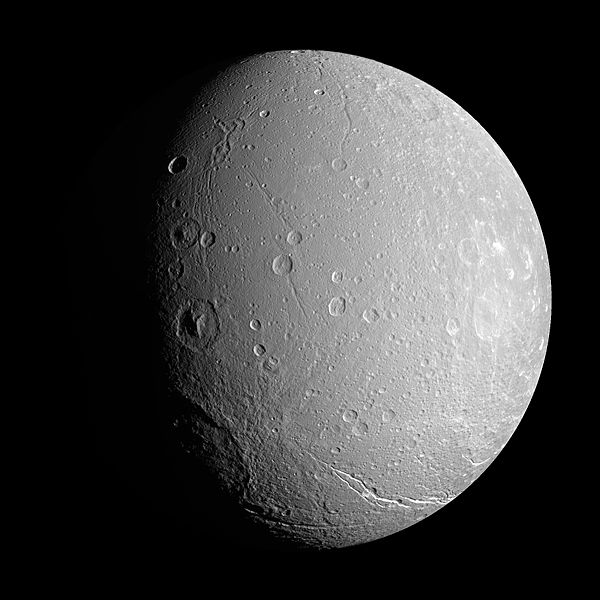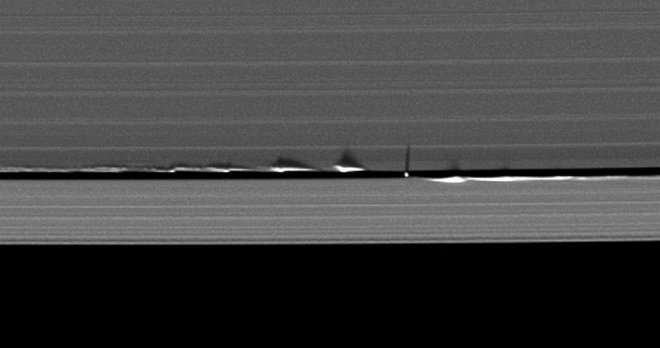
A new picture of Saturn's small moon Daphnis has opened up new horizons for scientists to study satellites of the second largest planet in the solar system. The picture, which was captured by Cassini spacecraft on 16 January, shows the spectacular pattern the miniature moon creates while travelling through its unique path - in the Keeler Gap within the outermost ring of the planet.
The picture, which was clicked by the spacecraft from 17,000 miles away, is also the closest view of the small moon that Nasa has ever come across. "The little moon's gravity raises waves in the edges of the gap in both the horizontal and vertical directions," NASA said in a statement, according to Asia one.
The photo, other than being a spectacular one, gives ample opportunities to scientists to study Daphnis. For instance, experts say that the waves in the ring, along the path of the moon, are formed by some material that gets captured by the satellite and eventually starts trailing behind it.
Also read: Pandora's potato look: Nasa releases spectacular Cassini pictures of Saturn's moon [PHOTOS]

Scientists have also found out from the photograph that Daphnis is only about 5 miles wide. "Like a couple of Saturn's other small ring moons, Atlas and Pan, Daphnis appears to have a narrow ridge around its equator and a fairly smooth mantle of material on its surface — likely an accumulation of fine particles from the rings," said Nasa, as reported.
We do not much about Daphnis even today, other than it is one of the few moons of Saturn which is formally named and that it was discovered on May 6, 2005. Saturn has several satellites out of which humans only know about 61. While Titan is the largest of the moons; Rhea is considered the most spectacular of all. Some of the other famous moons of the second largest planet are Enceladus, Mimas, Iapetus, Dione and Tethys.









